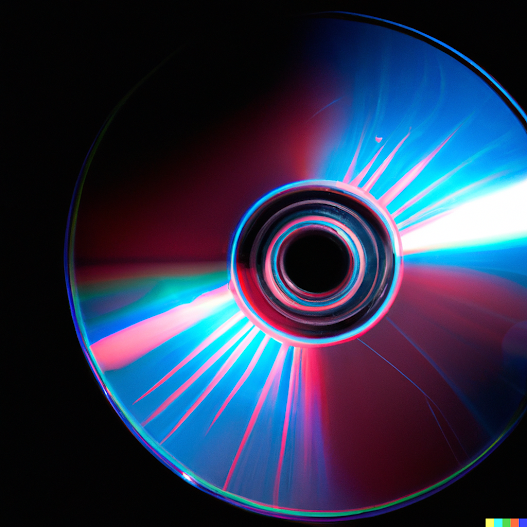Optical discs have revolutionized the storage industry with their ability to provide high-capacity storage solutions. Leveraging laser technology, these versatile storage mediums offer a reliable and efficient means of archiving and distributing data. In this article, we will delve into the intricacies of optical discs, exploring their technology, benefits, and potential applications. Our aim is to provide you with a comprehensive understanding of optical discs and their role in the digital world.
Introduction to Optical Discs
Optical discs, also known as optical media, are physical storage devices that utilize laser technology to read and write data. They are composed of a polycarbonate substrate layer, a reflective layer, and a protective layer. The reflective layer contains microscopic indentations, known as pits, which store the binary data.
How Laser Technology Works in Optical Discs
The heart of optical discs lies in the implementation of laser technology. A laser beam is used to scan the surface of the disc, detecting and interpreting the reflections from the pits. This process enables the retrieval of stored data, as well as the recording of new information onto blank discs.
The laser, typically a semiconductor diode laser, emits a focused beam of light onto the disc's surface. The laser's intensity and wavelength are precisely controlled to interact with the reflective layer. When the laser encounters a pit, the light is scattered differently compared to when it interacts with the flat areas between pits. This change in reflection is detected by the optical pickup unit, allowing it to interpret the stored binary data.
Advantages of Optical Discs
Optical discs offer numerous advantages that have made them a popular choice for data storage and distribution. Here are some key benefits:
Download
High Capacity Storage
One of the primary advantages of optical discs is their high storage capacity. They can store significantly larger amounts of data compared to traditional storage mediums like floppy disks and CDs. Blu-ray discs, for example, can accommodate up to 25 gigabytes (GB) on a single-layer disc and up to 50 GB on a dual-layer disc. This immense capacity makes optical discs ideal for archiving large files, such as high-definition videos or complex software applications.
Durability and Longevity
Optical discs are designed to be durable and resistant to damage. Unlike traditional magnetic storage devices, such as hard drives or magnetic tapes, optical discs are not susceptible to magnetic fields. This inherent resistance makes them less prone to data corruption or loss due to external influences.
Additionally, optical discs have a long lifespan when properly handled and stored. The protective layers shield the sensitive reflective surface from scratches and dust particles, ensuring the integrity of the stored data for extended periods.
Portability and Accessibility
Optical discs offer excellent portability, allowing data to be easily transported and accessed across various devices. They are lightweight, compact, and can be read by a wide range of devices, including computers, gaming consoles, and Blu-ray players. This versatility makes optical discs a practical choice for sharing data, distributing multimedia content, or delivering software installations.
Common Applications of Optical Discs
Optical discs find applications in various industries and sectors due to their unique characteristics. Here are a few common use cases:
Archiving and Backup
The high-capacity storage capability of optical discs makes them an ideal choice for long-term data archiving and backup. Government organizations, research institutions, and businesses often rely on optical discs to preserve critical information and ensure data integrity over time.
Media Distribution
Optical discs have long been used for distributing movies, music albums, and software applications. With the advent of Blu-ray technology, high-definition videos and immersive surround sound can be delivered on a single disc, providing consumers with an enhanced audiovisual experience.
Common Applications of Optical Discs
Medical Imaging
In the field of medicine, optical discs play a crucial role in storing and sharing medical imaging data. Radiographic images, such as X-rays, CT scans, and MRI scans, can be securely stored on optical discs, ensuring easy access for healthcare professionals and facilitating collaboration among medical teams.
Software Distribution
Optical discs have traditionally been used for software distribution, particularly in the gaming industry. Game developers and publishers often release their titles on discs, allowing users to install and play the games on their preferred platforms. Additionally, software companies distribute applications and operating systems on optical discs to provide users with physical copies and avoid large downloads.
Educational Resources
Optical discs have found extensive use in the educational sector. They serve as a cost-effective means of distributing educational materials, including interactive learning software, video tutorials, and e-books. Educational institutions utilize optical discs to deliver comprehensive resources to students, facilitating remote learning and offline access to study materials.
Over the years, optical disc technology has undergone significant advancements, leading to increased storage capacities and enhanced performance. Let's explore some notable developments:
Blu-ray Discs
Blu-ray discs, introduced in the early 2000s, represented a significant leap in optical storage technology. With their blue-violet laser technology, these discs achieved much higher storage capacities than their predecessors. Blu-ray discs quickly gained popularity, especially in the home entertainment sector, due to their ability to deliver high-definition video and superior audio quality.
M-Disc
The M-Disc (Millennial Disc) is a recent innovation in optical disc technology that addresses the concerns of long-term data preservation. Unlike traditional optical discs, the M-Disc uses a proprietary inorganic recording layer that is resistant to environmental factors such as light, heat, and humidity. This unique design ensures the longevity of data stored on M-Discs for up to 1,000 years, making them an ideal choice for archiving critical information.


